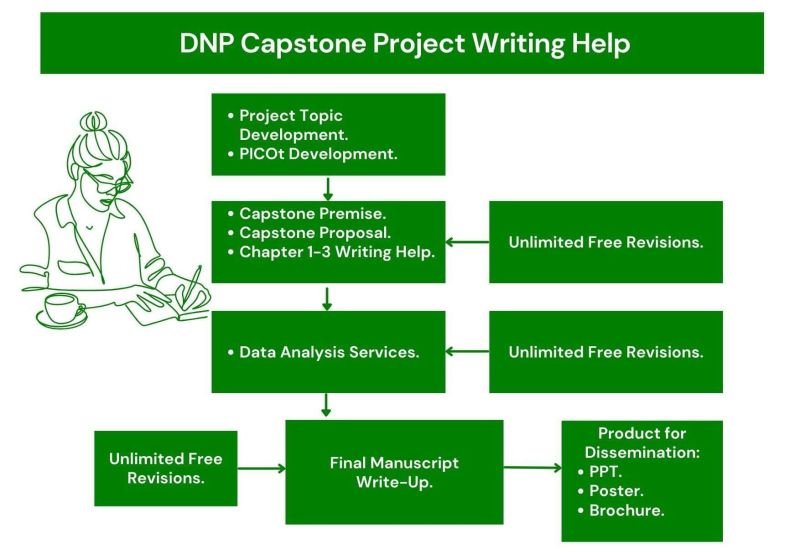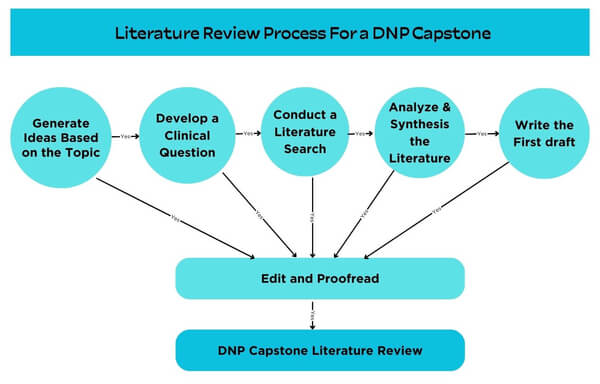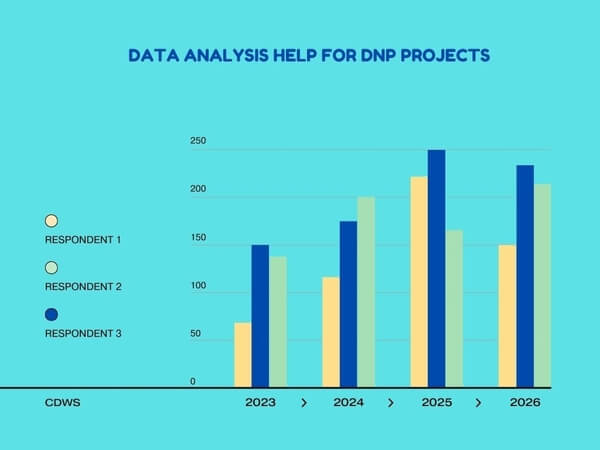DNP Capstone Project Writing Services | Help | Writer
DNP Capstone Project Writing Help and Services Offered by Professional Nursing Writers
Get outstanding DNP capstone project writing help from expert writers in the US. Nursing is rated as one of the most important and strict professions because it demands utmost integrity and honesty as students are trained to provide and improve care through preventing diseases, providing treatment, and helping patients cope with illnesses.
A Doctor of Nursing Practice (DNP) scholar is required to write a nursing capstone project as part of their doctoral degree. At Capstone Dissertation Writing Services, we are committed to helping you write a DNP capstone project that will translate clinical knowledge and skills into practice. We have nursing writers who are experts in Clinical Scholarly Projects (CSP) and Quality Improvement Projects, among others.
A capstone project should communicate logically, thoroughly, and precisely because nurses must be particularly skilled at interacting with patients and other healthcare experts. If you are seeking professional help in completing your DNP project or dissertation, make use of our reliable capstone project writing services and we guarantee 100% success of your project. We have been assisting DNP students for more than 10 years.

Main Areas of Our DNP Capstone Writing Services: Step-by-Step Help From Our Project Writers
- Developing DNP nursing capstone project topics or providing topic ideas depending on gaps in literature or needs in the clinical setting where our client works. This also involves developing a clinical or PICOT question.
- Writing a DNP capstone project premise, a DNP capstone proposal, or a prospectus depending on the university requirements.
- Writing the capstone project from scratch. Our project writers will write the capstone manuscript for you.
- Determining the most appropriate statistical tests for the project and conducting data analysis using SPSS or any preferred software.
- Rewriting DNP projects for students whose projects have been rejected or the supervisor/committee members have provided comments for correction.
- Assisting DNP students who are stuck with any chapter or any stage of the project writing process by offering expert capstone project consultation services.
- Editing and proofreading DNP capstone projects for students who have already written their projects.
- Our project writer will also assist in writing DNP dissertations and assignments such as Reflection Papers, Discussion Boards and Responses, SOAP Notes, essays, and Signature Assignments.
Help With Possible Nursing Capstone Project Ideas for DNP Capstone Paper
The AACN provides guidelines on the forms which a DNP nursing capstone project should take regardless of the learning institution one is enrolled in.
Healthcare policy change is one feasible capstone project area. It focuses on critically analyzing the healthcare policies being applied in a specific healthcare setting, how they affect the quality of care, and how those policies can be amended to improve the healthcare system.
Another viable DNP project area is developing a new model of care; this strives to re-invent the old models to new, improved, efficient, and possibly rapid simulations.
Developing evidence-based practice guidelines is also a project option that is capable of significantly impacting the nursing field; this kind of capstone project involves reviewing nursing practices in a bid to identify and develop guidelines that yield the best results.
Evaluating an existing healthcare practice or program is another sustainable project option that can advance knowledge in healthcare.
Using data to inform decision-making is also a capstone project option that would be impactful when developing and revising healthcare practices in a chosen setting. You can make use of the best DNP capstone writing company in the U.S now. Start by engaging our professional nursing capstone writers using live chat. You can also check our blog for more specific capstone project topic ideas.

General Components of a DNP Capstone Paper
In providing DNP capstone project help, we always consider the template or guidelines provided by the specific institution of learning. However, most elements in a DNP project are always the same regardless of the institution. Most universities require the student to develop a topic and write a DNP proposal before embarking on writing the main capstone.
The first component of a nursing capstone project is an abstract. In the abstract, our professional writers clearly state the purpose of your capstone project and how it will improve the healthcare field and inform on policies, laws, and ethics governing the field. The approach/methodology used when investigating the problem is also stated.
The body of the DNP project normally contains the introduction, literature review (and nursing theory), methodology/approach, findings, discussion, and conclusion. In most cases, a scholarly product for dissemination is also required as part of the DNP capstone project; this may be a tri-fold poster, a PowerPoint presentation, or a journal article. DNP projects ought to be evidence-based; data to support your evidence are fundamental when writing your nursing capstone project. Our professional writers understand that your work must be based on scientific evidence. We review credible peer-reviewed sources and properly cite them to avoid plagiarism.
Our DNP capstone writers use journal articles obtained from databases such as PubMed and EBSCOhost. We ensure that your results are well presented using tables and charts. The results are also interpreted, and your hypothesis or PICOT question is answered. Conclusions are drawn after a thorough analysis of your results.
DNP Capstone Project Writing Help by Chapter - Genuine Help From a Dedicated Project Writer
A DNP capstone project is normally organized into 6 chapters; introduction, literature review, methodology, findings, discussion, and conclusion. The outline may vary depending on the institution.
1. The Abstract
An abstract of a DNP capstone project is a precise summary of information that best describes whole parts of the project. In the abstract, a student presents a compressed view of informational content that allows a reader to evaluate the document's relevance to a specific information need.
In the abstract section, a student should give a factual summary of exact and concise knowledge of the full article by describing what was done, how it was done, what was found, and what was concluded. It should contain a precise introduction of the purpose of the paper, a description of the methodology, a summary of the results, and a conclusion of the study.
2. Chapter One: Introduction
The first chapter of a DNP capstone project is the introduction, where a project writer presents the project's background information and rationale for conducting such a DNP project. In the introduction, a student explains the purpose and the main sections of the paper.
Chapter one is subdivided into subsections which are background and purpose, problem statement, objectives, historical and societal perspective, incidence and prevalence, and healthcare costs. At the end of the introduction, a student should state the paper's thesis statement.
a). Background and Purpose of the Paper
In the background section, a student discusses the available information about the clinical problem and the purpose of conducting the inquiry. One also states the clinical question to be addressed, the study hypothesis, aims and objectives, and the study's purpose. The clinical problem statement involves a systematic identification of a gap between the current and ideal conditions. In this section, one states the aim and objectives of the study. When providing DNP capstone project help, we assist students who may have challenges determining the purpose of their project.
b). Problem Identification
In the problem identification section of the DNP project, one identifies the study problem, the root cause of the problem, and its effects on the population. One then presents the justification and the need to study the identified problem. In this section, the student provides convincing reasons that necessitate the current research.
The explanations provided should be based on the evidence, thus providing a compelling need for the study. In case one finds it difficult to identify a problem, they are always welcome to seek DNP capstone project help from our professional capstone writers.
c). Incidence and Prevalence
A nursing capstone project writer should describe the current status and conditions of the problem. The description involves connecting the practice history of the problem and changes over time identified through experience and observations. Policies and performance measures are examples of sources used to assess the current status of the clinical problem.
d). PICOT Foundation
The Population, Intervention, Comparison, Outcome, and Time (PICOT) is a questioning strategy used in evidence-based DNP projects to facilitate ease of finding facts and relevant information. In the introduction to the PICOT section, one summarizes evidence-based practice questions that form the basis for searching the evidence. The PICOT format is used to develop questions that are easy to search and answer. This section aims to inform the reader how the PICOT question was created by summarizing background information.

3. Chapter Two: Literature Review
In the literature review section of a DNP capstone project, the project writer describes and interprets the PICOT question and the keywords used in searching related studies. The databases used and the result from searching the identified keywords are reported. One organizes ideas from identified reviews coherently to facilitate proper transitions of concepts from one review to another.
The purpose of a literature review should be to support the need for improvement. The literature review in the nursing capstone project is not meant to identify the gaps in a given research field but to address the gap based on the available evidence. In the literature review, emphasis should be given to the main theories, explanations and findings, and contradictory points or perspectives that have caused controversy.
4. Capstone Project Chapter Three: Methodology/Approach
In chapter 3 of a DNP capstone project or dissertation, a DNP student gives a detailed description of the procedure used in conducting the experiment. The procedure should be sufficient to allow other researchers to replicate the study. The description should include information on the study design, population and sample, instrumentation, data collection, and data analysis.
The student also explains how the experiment or intervention was conducted, the experimental conditions, the statistical tests used to analyze data, and the appropriateness of such tests. As a capstone project writing service provider, we assist our clients in developing the methodology section of their nursing capstone if they face any challenges.
a). Study Design
In this section of a DNP project, one states the type of design that the study used. The study design can be experimental, quasi-experimental, or observational. The study design selected should fit the clinical question. A student should give detailed information on how the study was conducted.
The information is achieved by providing a step-by-step description of what was done and their order. The information for experimental design includes the type of treatment applied to subject, how the treatment was applied, and the length of exposure to treatment.
b). Population and Sample
One should give a description of the sample, including size and the selection criteria used to recruit participants into the study. A description of the population and a sample from a health perspective should include the physical, mental, cultural, and socioeconomic characteristics. The DNP student should also obtain the consent of participants.
c). Instrumentation
The tools utilized in the DNP project are mentioned in the instrumentation section. Some of these tools include surveys and questionnaires. The justification of reliability and validity of instruments used should be given and their International System (SI) units of measurements. The ethical consideration of Institute of Review Board (IRB) process completion is also reported. The tools used should be attached to the appendix section.
d). Data Collection and Analysis
In this section, one describes the methods used to collect and analyze data. The description should mention all activities used in gathering data in detail. The statistical test appropriate for the project is stated along with their alpha levels of significance. The project writer should mention the statistical software used for analysis.
5. Chapter Four: Findings
In chapter 4 of a DNP capstone project, the student presents the statistical results obtained from the study. The statistical results include summary statistics of the sample and outputs from the analysis. The results from the statistical tests should be presented in tables and figures that are informative.
The results are presented as a logical textual form accompanied by visual representations. The results presented should be meaningful by ensuring data are presented in decimals instead of fractions, using and defining appropriate units, and giving an accurate description for easy referencing.
6. Chapter Five: Discussion
In chapter 5 of a DNP capstone project, one gives a comprehensive discussion on the implications, limitations, sustainability, and application of the DNP Essentials on the results and the conclusion. One should focus on discussing the study results, the relevance of the findings, and their linkage to previous knowledge.
a). Implication
In this section, one discusses the findings of the project in relation to future practice. The student also assesses whether the results are statistically or clinically significant. The contribution of such results to the solution of the identified clinical problem is also discussed. One discusses study findings in relation to the purpose and objectives of the DNP project and explains how the study findings have contributed to practice change.
b). Limitations and Sustainability
The DNP student should highlight the shortcomings of the project. These limitations may include the project's small sample size and time constrain. This section should also discuss skewed findings in the context of other studies. In the sustainability section, one should describe the plans to keep a progressive practice change. A DNP capstone project should produce outcomes that can be evaluated and demonstrated sustainability.
c). Dissemination and Application to DNP Essentials
In the dissemination section, one explains how the DNP capstone project results will be shared with others. Sharing aims at informing, supporting, and adopting the practice change. The description also includes plans for publication in peer-reviewed journals and presenting the results to other stakeholders.
One also discusses the DNP Essentials and highlights the essentials that were met by the study. DNP capstone projects must meet an identified need and utilized interventions based on the given DNP Essentials.
7. Chapter Six: Conclusion
In the last chapter, one should give a precise conclusion of the study. The DNP student summarizes the study's significant findings, implications, and relevance by restating the clinical question and explaining how the results addressed it. If there were limitations in the study, one should highlight and suggest ways in which future inquiry can improve the present study. After completing the writing process, one should edit and proofread the DNP capstone to ensure there are no errors.
Some DNP Nursing Capstone Project Topic Ideas to Get You Started
Below are some DNP capstone project topic ideas that can get you started in case you are stuck. You can also contact us if you do not have a topic and we will develop a unique topic based on your clinical setting.
- Impacts of retail health clinics (RHCs) on access to, continuity of care, and the use of preventive healthcare services among women.
- Utilizing health education as a tool for improving mental health among elderly patients in an acute care hospital.
- Educating intellectual disability nurses on screening post-traumatic stress disorder among victims of violence.
- Evaluating the association of nurses' perceived patient ratings on safety culture and the occurrence of adverse effects during child birth among teen mothers.
- Executive nurse leadership practices and frameworks for evaluating the performance of health systems.
- The role of nurse managers in change management in hospitals.
- Assessing the efficacy of non-pharmaceutical approaches in managing physiological processes among children.
- Designing and implementing healthcare information storage and processing facilities that integrate informatics and ethics in service delivery.
- Designing an outreach program to educate adolescents on birth control measures and prevention of sexually transmitted diseases.
- Establishing frameworks for improving nurse-physician collaborations to improve neonatal care in public hospitals.
- Implementing a mitigation program for the consequences of anesthesia in children's development.
Help With Application of Nursing Theory in DNP Projects
As a leading capstone project writing service we understand that DNP scholars may be required to make use of nursing theories in their project. Some of the most used theories are middle-range theories. Middle Range Theories (MRTs) explain specific phenomena based on information from evidence-based research.
MRTs have become critical to nursing research due to their relevance to the day-to-day delivery of healthcare services. There are four critical classifications of MRTs that include: Physiological, social, psychological, and integrative models. Each classification consists of several MRTs that are applied when conducting nursing research.
We assist our DNP clients to apply the most appropriate nursing theory in their projects. Some commonly used MRTs include the Health Belief Model by Blanche Mikhail, Theory of Comfort by Katharine Kolcaba, Behavioral Systems Model by Dorothy Johnson, Quality of Nursing care Theory by June Larrabee, and Theory of Uncertainty in Illness by Merle Mishel.
Some commonly used Grand nursing theories include General Systems Theory by Imogene King, Health as Expanding Consciousness by Margaret Newman, Theory of Human Becoming by Rosemarie Rizzo Parse, and Self-Care Theory by Dorothea Orem.
Help With Validity and Reliability of Data Collection Instruments
Some DNP students face challenges in selecting a valid and reliable tool for data collection. Our professional writers assist DNP students to develop or select the best tools for their DNP capstone projects. A data collection tool may be a questionnaire or an interview protocol.
Determining the reliability and validity of a DNP project data collection tool is essential in influencing the decision to implement the findings in a clinical setting. Reliable and valid data collection tools increase transparency and decrease bias by the researcher. Additionally, the lack of testing an instrumentation’s validity and reliability provides a challenge in establishing the errors and the theoretical relationships being investigated.
A reliable instrument is precise, consistent, repeatable, and stable. For a data collection measure to be reliable, it ought to offer readers adequate data to determine if there exists a relationship among variables. Consequently, validity focuses on determining if the findings have fulfilled the study methods requirements.
Data Analysis Services For DNP Capstone Projects
As a committed capstone project writing service provider, we offer holistic services for our clients, we, therefore, have data analysis experts to assist our DNP capstone clients. Data analysis can be quantitative or qualitative depending on the type of data that has been collected.
The type of data and method of analysis are normally stipulated and approved by a DNP capstone supervisor before the data collection is conducted. The two main methods of data analysis are quantitative and qualitative analysis. Most DNP scholars prefer to use quantitative data because of the nature of their projects, and limited time and resources.

We assist such students in organizing, cleaning, coding, and analyzing quantitative data using SPSS software, R software, or STATA. For students who seek qualitative data analysis services, we use NVivo for analysis. Therefore, our data analysis experts guarantee that all our customers are successfully assisted and their DNP projects are completed successfully. Proper presentation of data is vital to ensure ease of understanding by the readers.
Once you buy our DNP data analysis services, our statisticians organize the results in a clear and systematic manner. We first present the descriptive statistics; in this part, we use a method known as critical appraisal. Then we present the inferential statistics based on the clinical question(s) or the hypotheses.
Our experts also use graphics such as charts and tables to resent the results in addition to descriptions. Most DNP projects are designed to determine the effectiveness of an intervention; therefore, two groups are normally used (the intervention group and the control group). Depending on the nature of the project, we conduct tests such as independent samples t-test, Mann-Whitney U test, paired-samples t-test, and Wilcoxon sign-ranks test, among others.
Formative and Summative Evaluation for DNP Projects
Formative and summative evaluations form an essential aspect of the DNP capstone project quality assurance process. Formative evaluation is done while the project is being conducted. The aim is to regularly identify and address potential defects that may limit the achievement of the formulated objectives. Formative evaluation promotes continuous improvement of the project.
A summative evaluation is done after the project has been conducted. Unlike formative evaluation, summative evaluation determines the extent to which the nursing capstone project objectives were met. For an effective capstone project, DNP scholars should combine both formative and summative assessments. In case a student is not sure how to go about writing the evaluation section of their project, our professional DNP capstone writers are always available to help.
Why You Need Capstone Writing Services or a Qualified Project Writer for Your DNP Capstone
When you hire a professional DNP capstone writer from our company, we ensure your project is formatted to meet the basic requirements of capstone writing from your learning institution. Our company's goal is to write nursing capstone projects of publishable quality and demonstrate higher-order learning skills such as critical thinking, evaluation, and analysis according to Bloom's Taxonomy. You can, therefore, be assured of excellent writing services that comply with your school's writing style and your supervisor's instructions.
Your nursing capstone project is reviewed by an editor who checks for plagiarism and common writing mistakes. The editor ensures your work portrays authenticity. A rational flow of ideas is also important to demonstrate higher communication skills that every nursing student should possess. In an effort to deliver exceptional writing services, we have put in place a friendly and effective customer support team to help you make your DNP capstone writing services order.
We will meet your deadline and have your work thoroughly reviewed by an editor with a nursing academic background. You will not incur any cost for any revisions you may need on your project. Learn how to order your capstone writing services from our order process page or join our live chat for additional information on our capstone writing services. Learn more about our DNP capstone writing services here.

|
|







